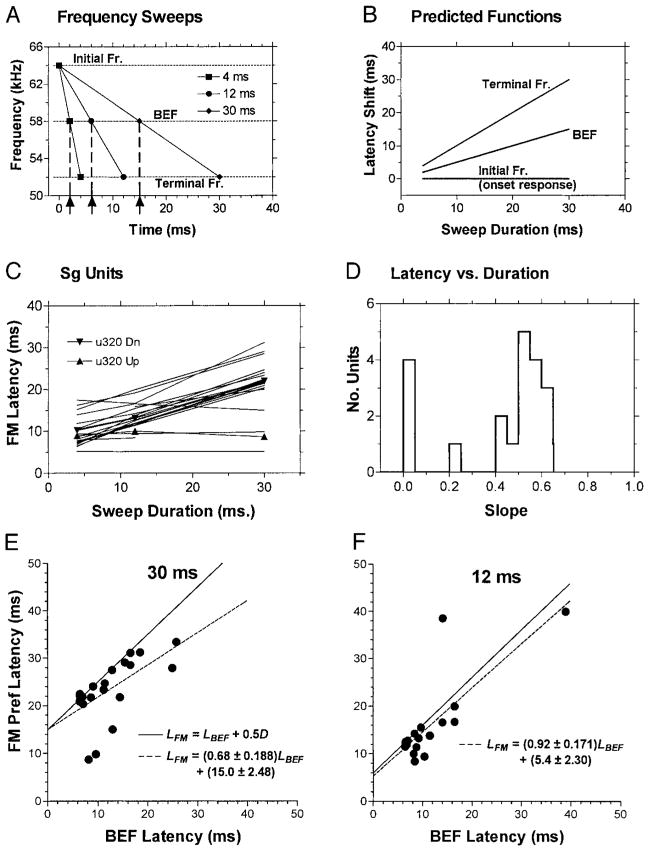FIG. 11.
A: variation in frequency as a function of time for 4-, 12-, and 30-ms downward FM sweeps, illustrating how particular frequencies in the sweep shift in time with increases in sweep duration. The initial, middle (i.e., the BEF), and terminal frequencies shift by factors of 0, 0.5, and 1.0 times the sweep duration, respectively. ↑, the predicted latency shifts for units with an EFi equal to the BEF. B: predicted growth of latency with duration for the initial frequency (slope = 0), BEF (slope = 0.5), and terminal frequency (slope = 1.0) in fixed-bandwidth FM sweeps. C: latency vs. FM sweep duration functions in Sg neurons. Median 1st-spike latencies at 20 dB above MT are plotted for each duration tested (4, 12, and 30 ms). The majority of units show a monotonic, linear growth in latency with increasing sweep duration. This implies that the response to sweeps was triggered by an internal feature of the sweep, namely an EFi, which varied in time with modulation rate. D: distribution of slopes of the latency-duration functions in C. One group of units responds to sweep onset (slopes near 0), while the majority responds to the BEF in the sweep (slopes near 0.5). E and F: scatter plots with linear regression analysis of latency for FM sweeps vs. BEF tones for stimuli of 30- and 12-ms duration, respectively. - - -, the linear regression of FM against BEF latency; —, the relationship LFM = LBEF + 0.5 D. Most Sg units had nearly equal BEF and FM latencies (after subtracting 0.5 D, the temporal offset of the BEF in the sweep). The correlation was significant for Sg units at both sweep rates and for both directions of FM (not shown).

